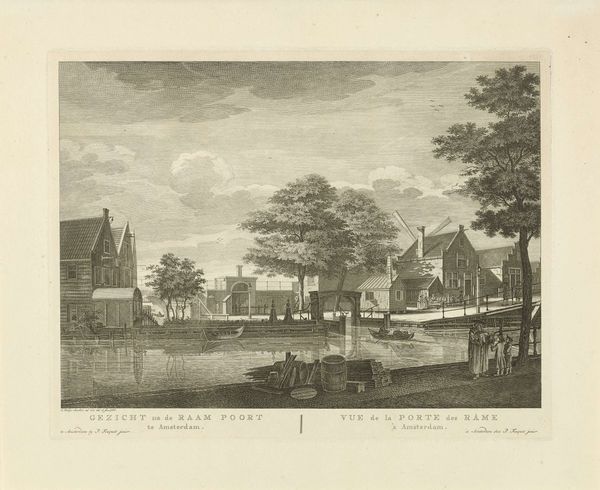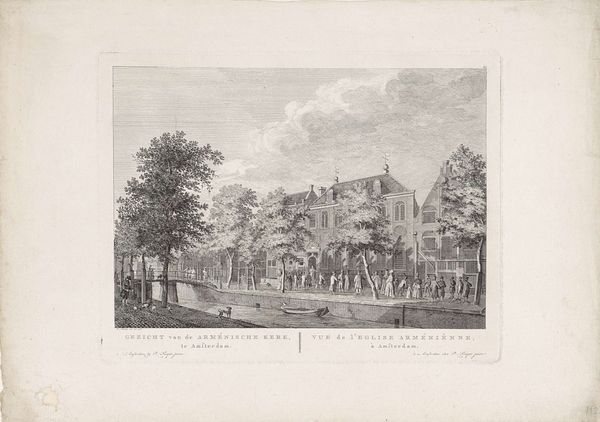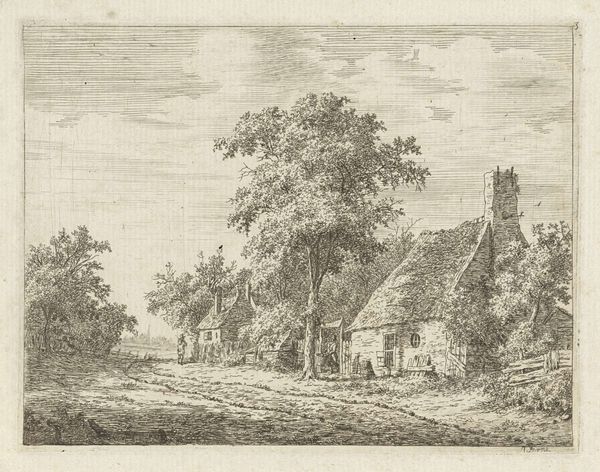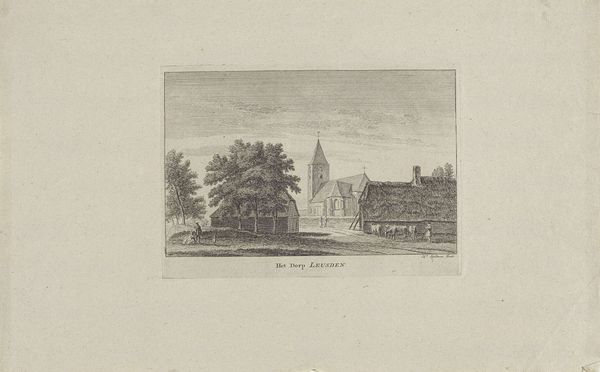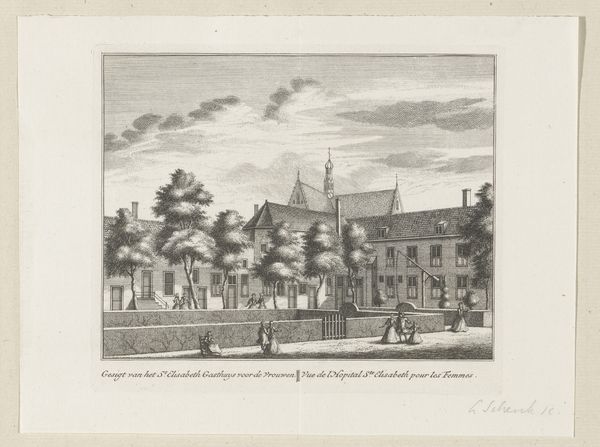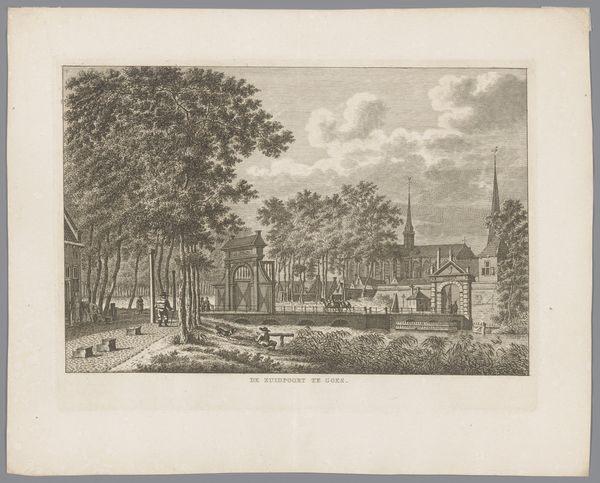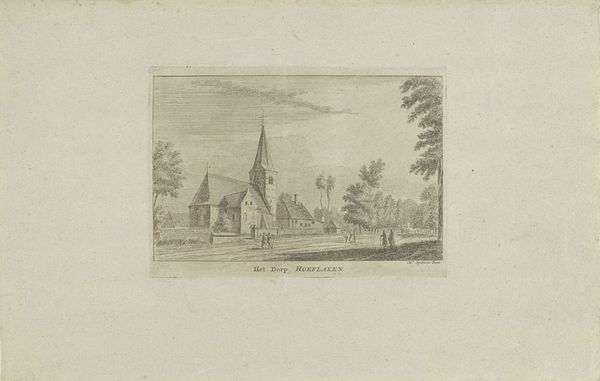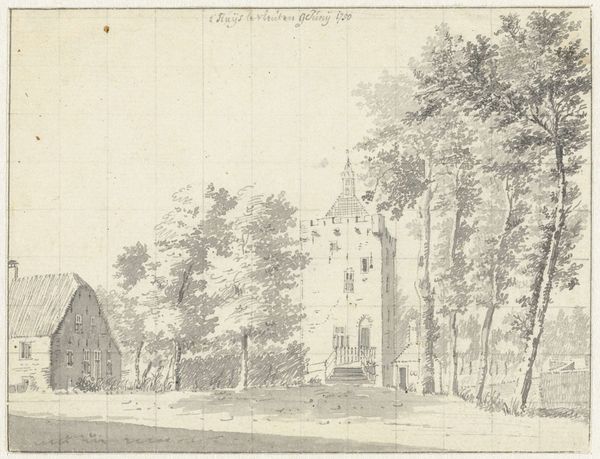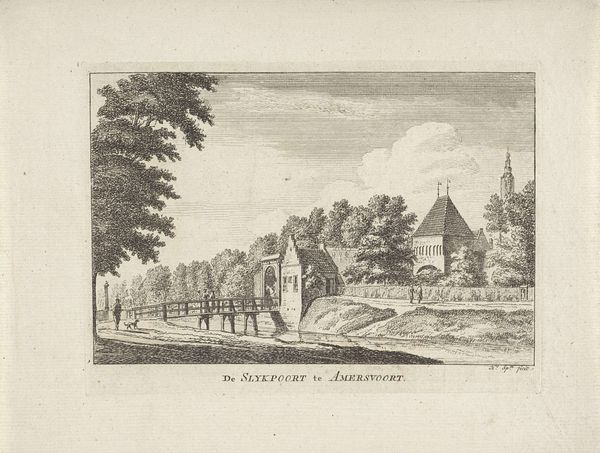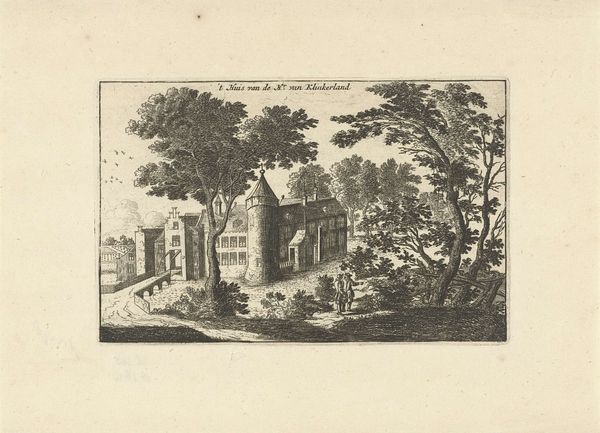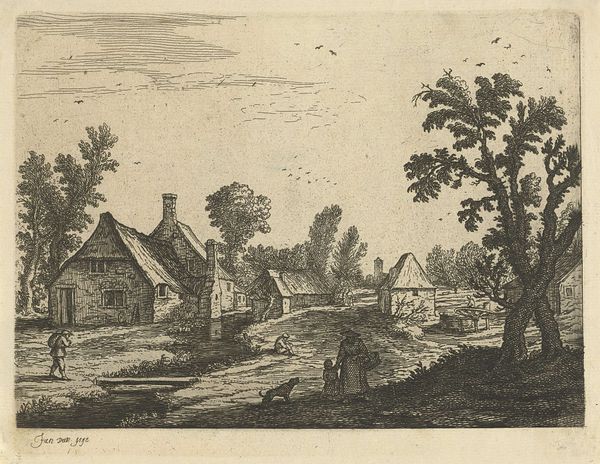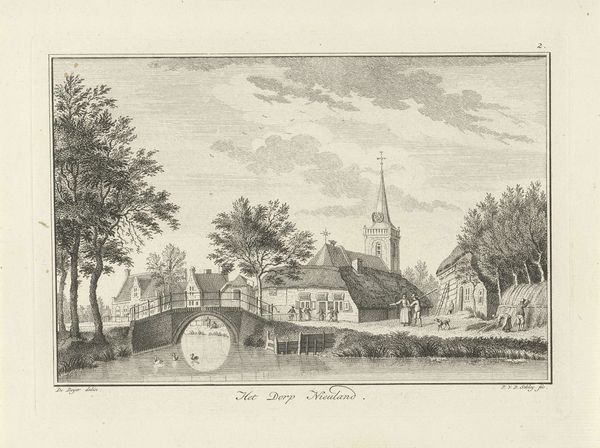
Dimensions: height 162 mm, width 207 mm
Copyright: Rijks Museum: Open Domain
Curator: We’re now looking at Hendrik Spilman’s "View of the Weerd Gate in Utrecht," dating from around 1742-1784, held here at the Rijksmuseum. It's a lovely etching. What's your initial impression? Editor: It’s so delicate! Almost fragile. The tonal range is incredibly subtle; the lines seem to whisper rather than shout. And there’s such a sense of light; it feels like a hazy summer afternoon. Curator: Spilman made many such topographical prints. These weren’t just pretty pictures; they served as crucial records of the urban landscape during a period of significant economic and social change in the Netherlands. Editor: The composition, to me, is very interesting. The gate itself isn't centered but is offset by that rather prominent tree on the right. It unbalances the image just enough to create a quiet visual tension. Curator: Precisely! And those figures crossing the bridge - they animate the scene, transforming a simple cityscape into something more dynamic, more reflective of daily life. This was at a time when the Dutch Republic’s Golden Age was fading, but these city views provided a sense of pride. Editor: You're right. It’s the little human touches—the dog trotting along, the way the artist has created receding scale and recession into the background. Did he work with very small tools to create this sense of distance with the details? Curator: Absolutely. These prints had a market too, appealing to a growing middle class who wanted images of their cities for decoration and for reinforcing their local identity. The prints were distributed quite widely, thereby molding views and experiences for wider society. Editor: The bare tree branches are incredible. It reminds me that every choice in the structure is intentional—everything relates in careful, deliberate decisions. It gives the whole a powerful and persuasive coherence. Curator: Indeed. Spilman’s view does more than simply depict Utrecht. It subtly constructs a vision of urban life and civic identity during this particular moment in time. Editor: A great point! Now that I consider the role of visual architecture like the looming, aged archway set near organic details and human interaction, it definitely resonates even more deeply than when I first noticed it. Thanks!
Comments
No comments
Be the first to comment and join the conversation on the ultimate creative platform.

